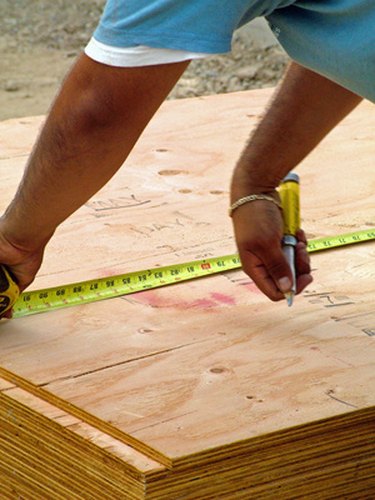
Plywood is a common building material produced by gluing together several layers of thin wood plies or veneers. Depending on the intended use, and grade of the plywood, the type of glue and wood used to create the finished product can vary widely. Regardless of the specifics, plywood is most commonly purchased in large, rectangular sheets and requires some sort of protection from the elements in order to avoid the damaging effects of rot.
Causes
Video of the Day
Rot is a fungus that is caused by excessive exposure to moisture. Plywood becomes susceptible to rot when it is left exposed to the elements, or trapped in a moist area such as inside a basement, without proper ventilation to allow the moisture to dry. The glue used to hold the plywood's veneers together will begin to break down when it is exposed to moisture over a long period of time, allowing additional water to become trapped inside the plywood with no way to dry.
Video of the Day
Identification
Plywood rot can be identified by appearance of the wood. Areas that have been disturbed by the growth of fungal spores will appear brown in color and crumble when touched. These areas are suffering from decay of the wood, caused by the rotting process. Other varieties of rot may cause the wood to take on a yellowish color hue and break apart into string-like fibers when it is disturbed.
Dangers
Once a piece of plywood has begun rotting, the fungal spores creating the rot will continue to grow and cause ongoing damage to surrounding wood until the moisture source has been eliminated. Rotting plywood can quickly become unstable and no longer sufficient for its originally intended use. For instance, rotting plywood used to secure roofing shingles may cause shingles to come off the roof, while any rotting plywood used in flooring will greatly decrease the stability of the sub-floor.
Prevention
Plywood rot can be prevented by initially selecting the correct grade of plywood. Depending on the construction of the material, plywood can be rated for indoor, outdoor, or marine use. By using the right plywood for the project, the risk of rot is reduced by the presence of rot-resistant materials within the wood when moisture is expected for the application. Any untreated plywood should be completely covered in paint, varnish, or other approved sealant before using it in a project.